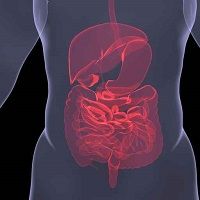Article
New Method Can Now Analyze “Dark Zone†of Gut Microbiome
Author(s):
It is now possible to accurately measure population growth rates of the gut microbiota of mammalian gastrointestinal tracts, according to findings published in the journal Nature Communications.

It is now possible to accurately measure population growth rates of the gut microbiota of mammalian gastrointestinal tracts, according to findings published in the journal Nature Communications.
Researchers from the Wyss Institute for Biologically Inspired Engineering at Harvard introduced a new method called distributed cell division counting (DCDC) to measure microbial growth rates by examining the accurate segregation of E. coli at cell diving of the genetically encoded fluorescent particles.
This method mimics “mark and recapture” techniques used by ecologists who estimate population levels of animals in the wild, the researchers explained in a press release.
“The dream in this field is to make cell based computers, using cells that can remember, count, sense, actuate and complete tasks in a programmable way,” senior author Pamela Silver, PhD remarked. “This advance brings us another step closer to making that original dream a reality.”
The investigators used a genetically engineered red colored fluorescent protein as their visual aid and fed the DCDC strategy to mice models to test their microbiota growth in the intestinal tracts. Previously, it was a black hole wherein researchers typically were unable to access or analyze population estimates unless they were to disturb natural conditions in the gut. The researchers used the engineered proteins to “recapture” the population and extrapolate estimations.
“Many different approaches to managing gastrointestinal health — such as the use of antibiotics, probiotics, genetically engineered bacteria, and therapeutics – rely on us being able to tell how these treatments affect the growth, division and death of certain microbial populations in our guts,” said lead author and Wyss graduate fellow Cameron Myhrvold. “Until now, we’ve been lacking a way to measure how growth dynamics are affected by our interventions.”
Interestingly, the researchers learned that E. coli death impacts the long-term survival of the E. coli populations and aids their battle against competition from other microbial strains. Using a mathematical model, they determined that while many microbes die upon entrance to the guy, their growth rates can stabilize as they adapt to the gut environment.
According to the authors, DCDC method could be adapted to fit a wide range of microbes to study and further probe gastrointestinal research. It could allow for the observation of mammalian microbiota after changes to the diet, environment, and health conditions change or experimental variables are manipulated.


